Large-scale F0 CRISPR screens in vivo using MIC-Drop
Saba Parvez, Zachary J. Brandt, Randall T. Peterson
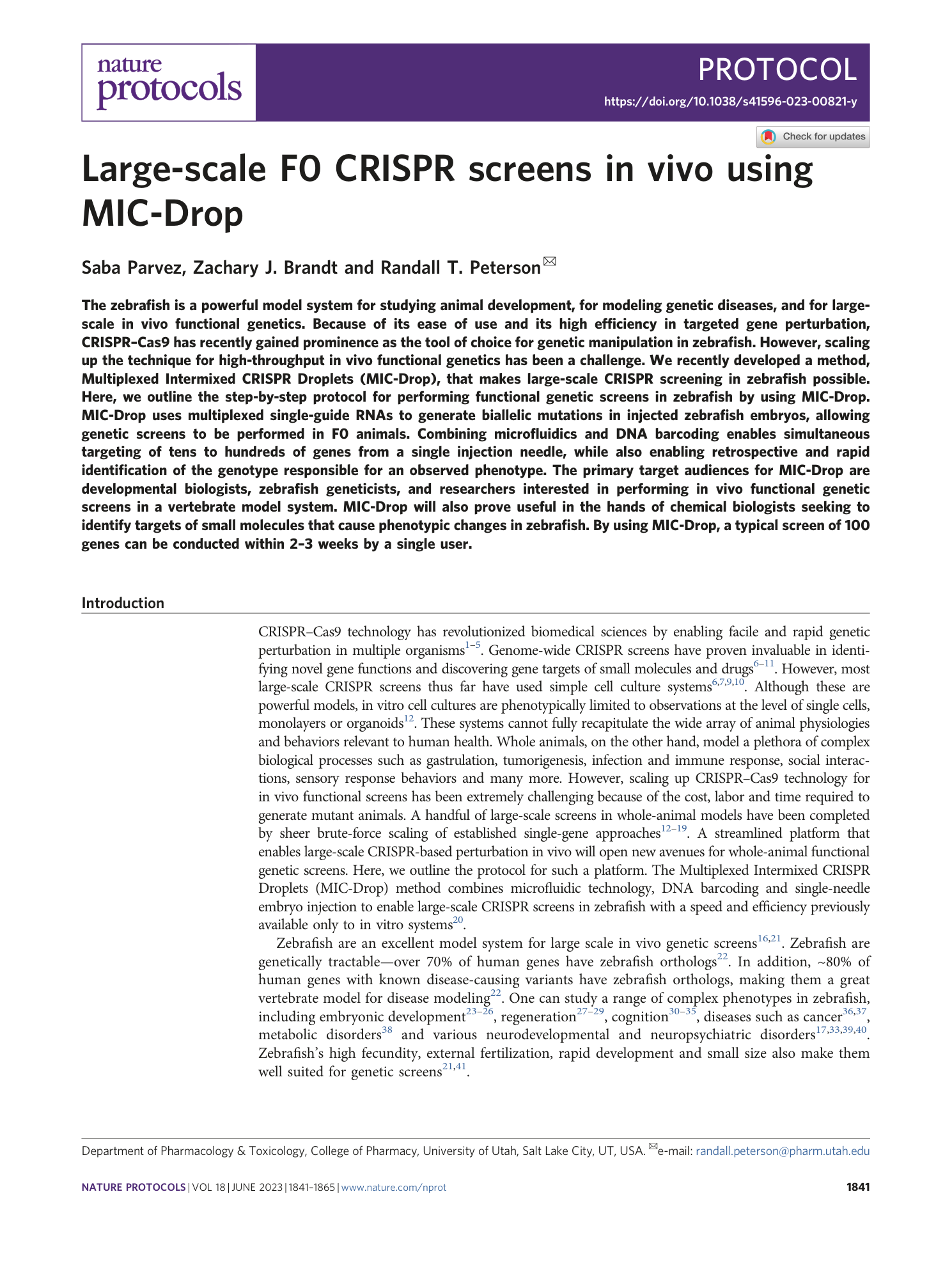
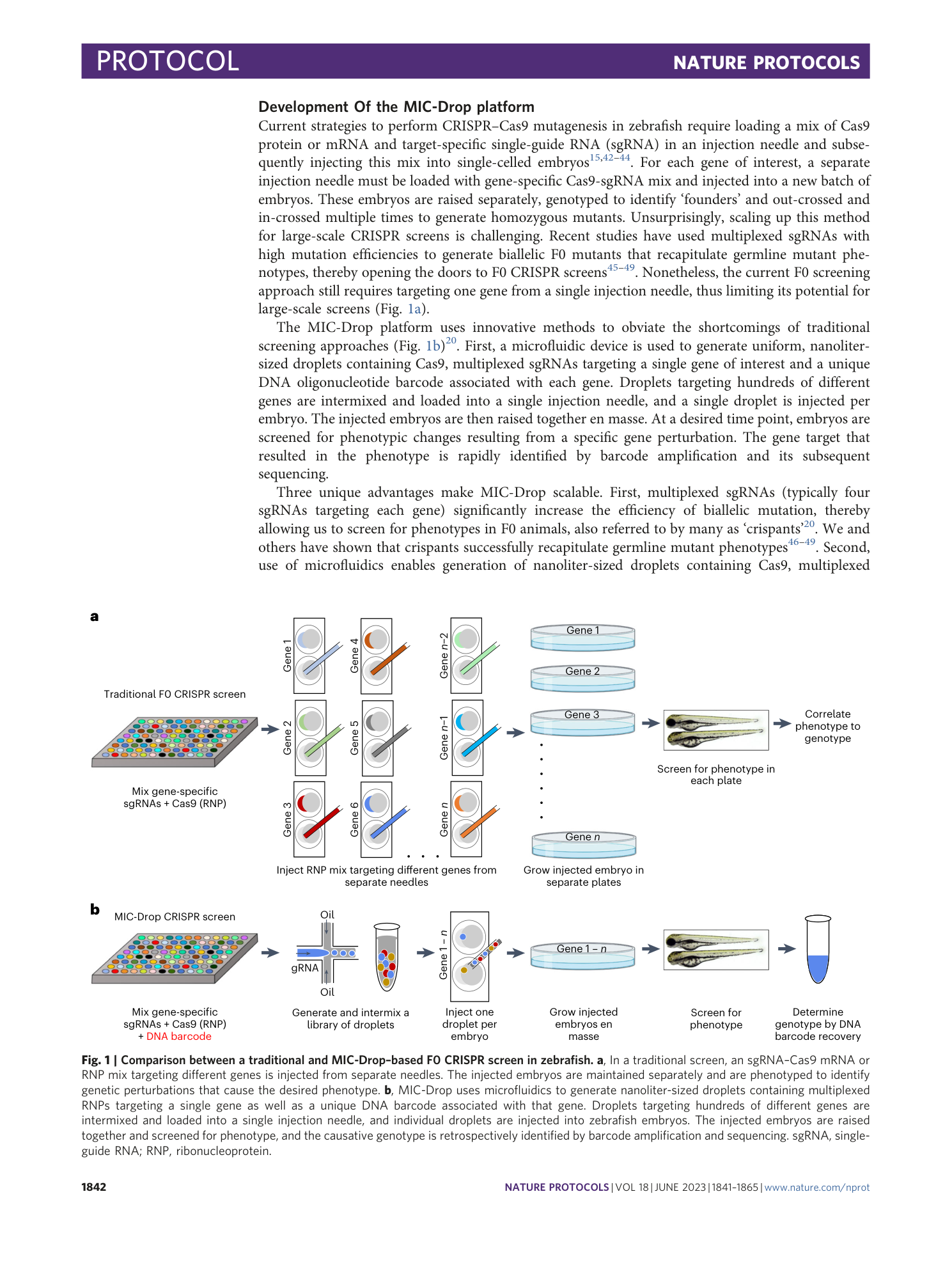
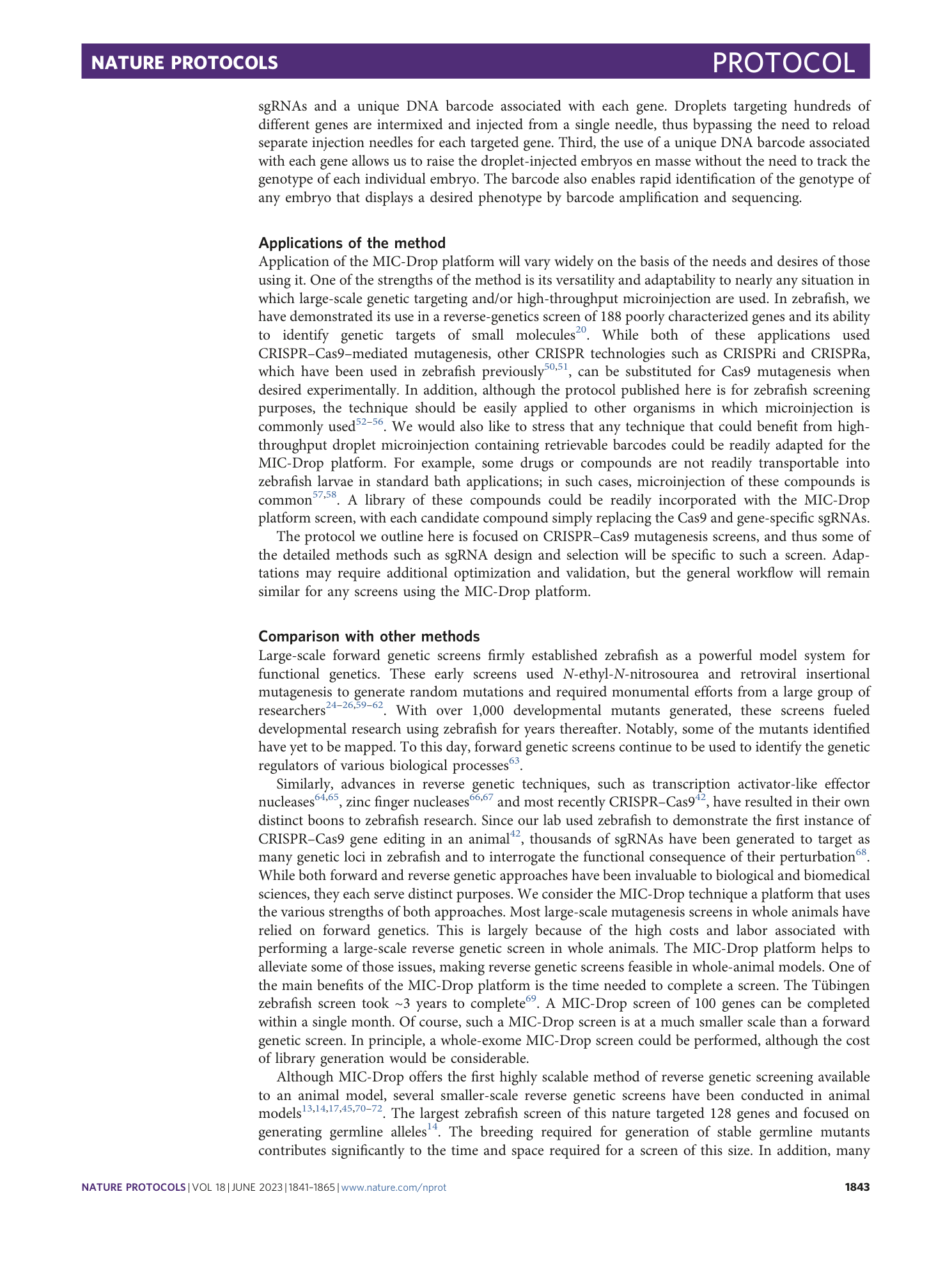
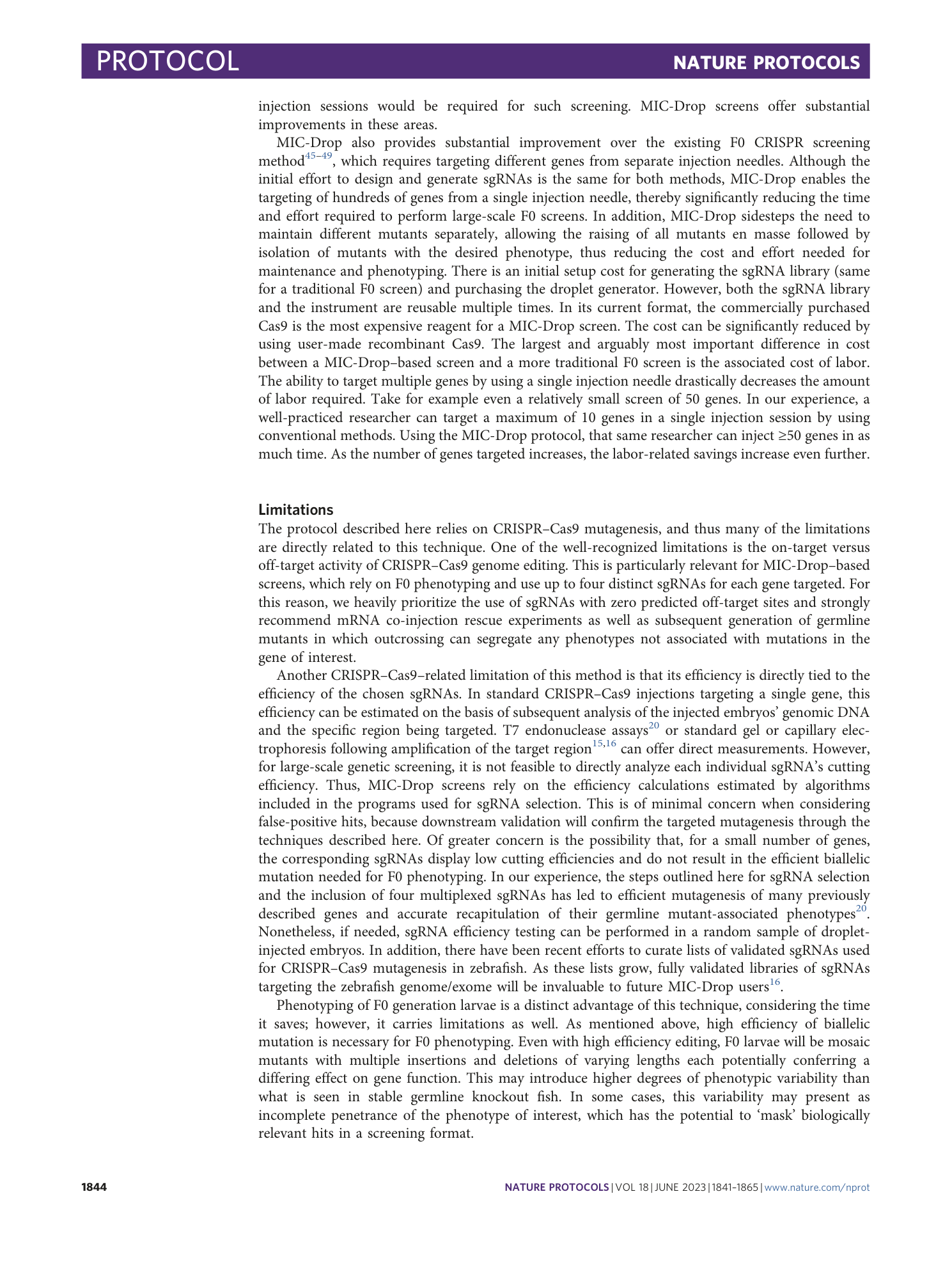
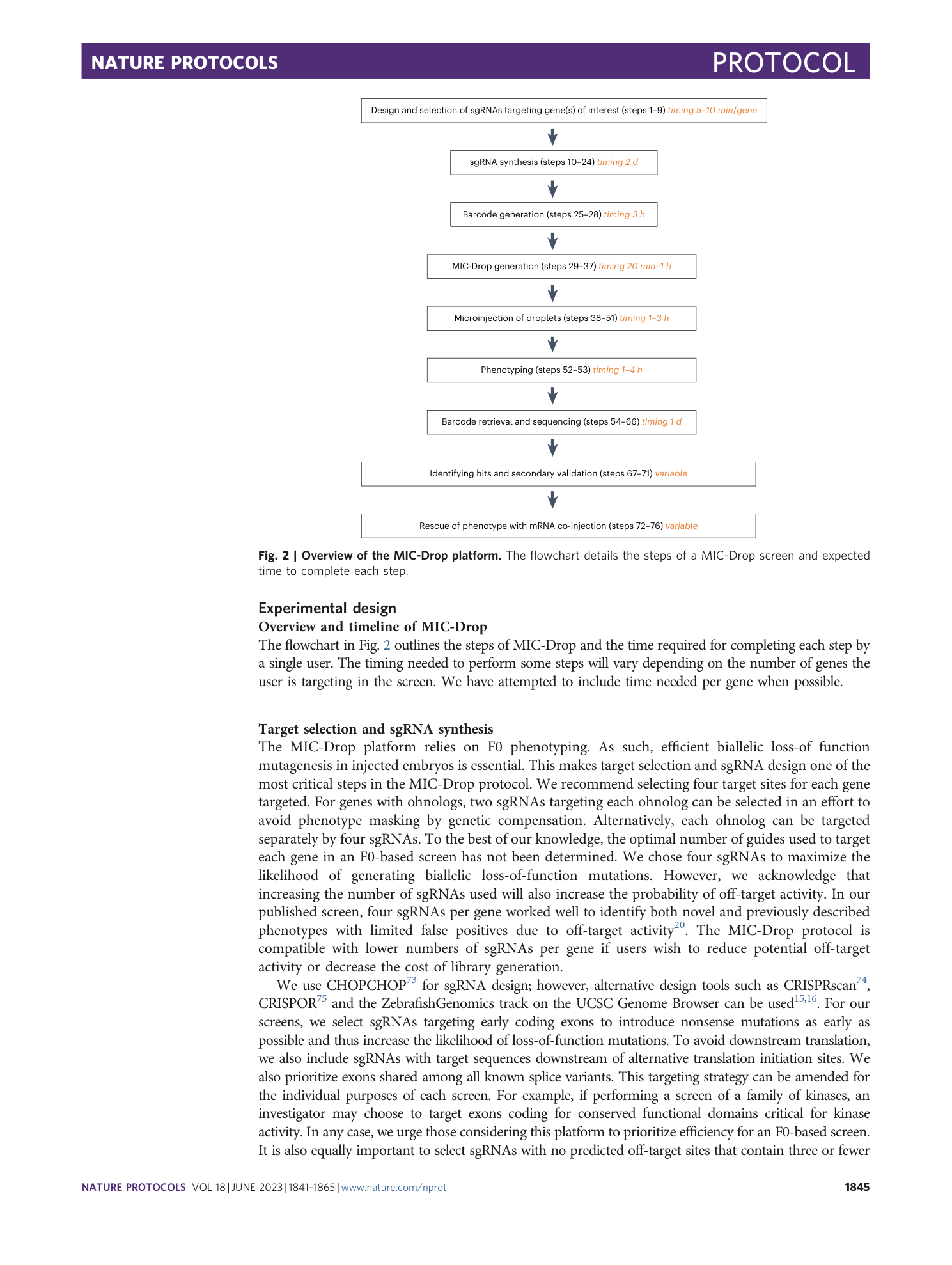
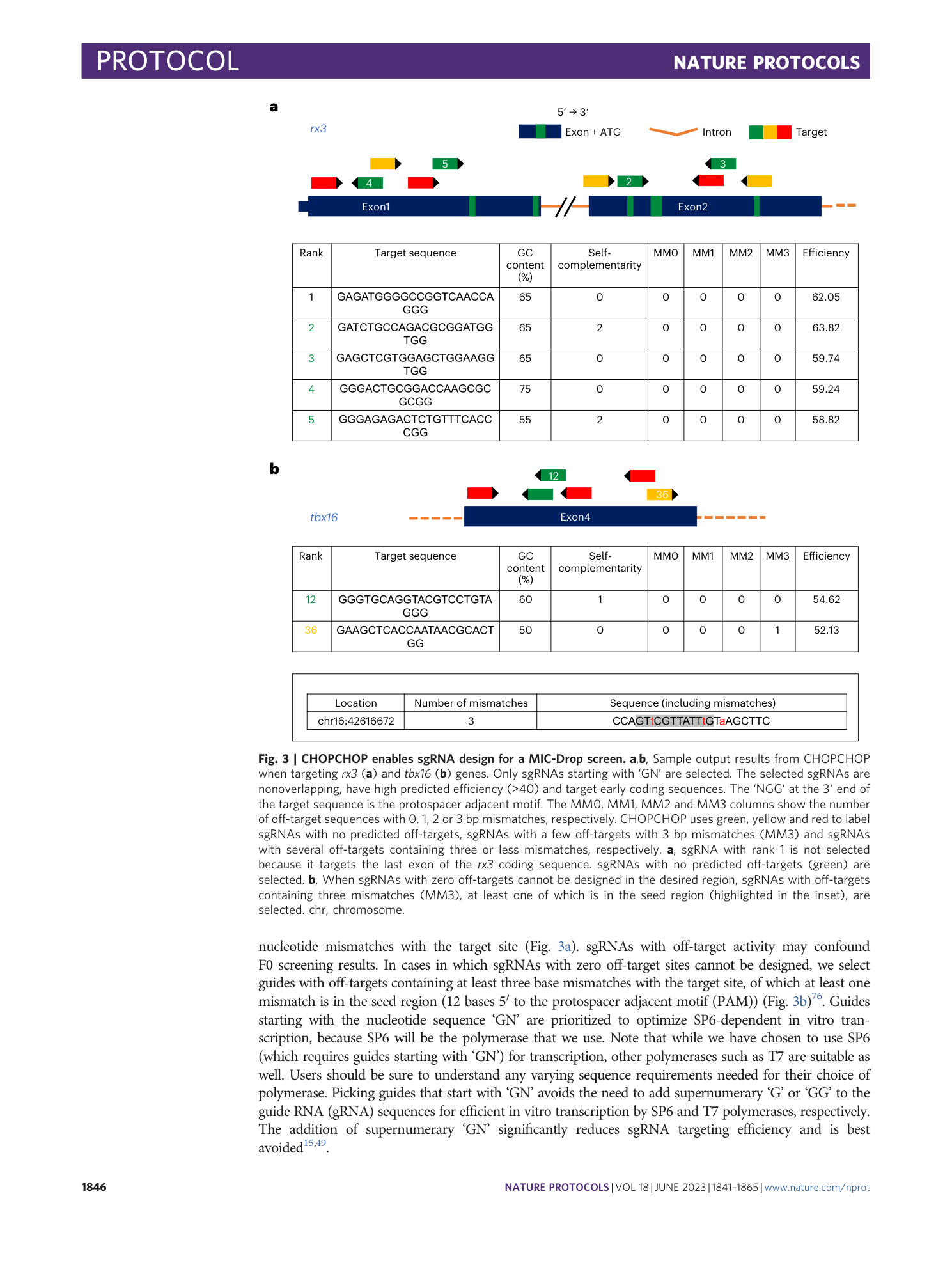
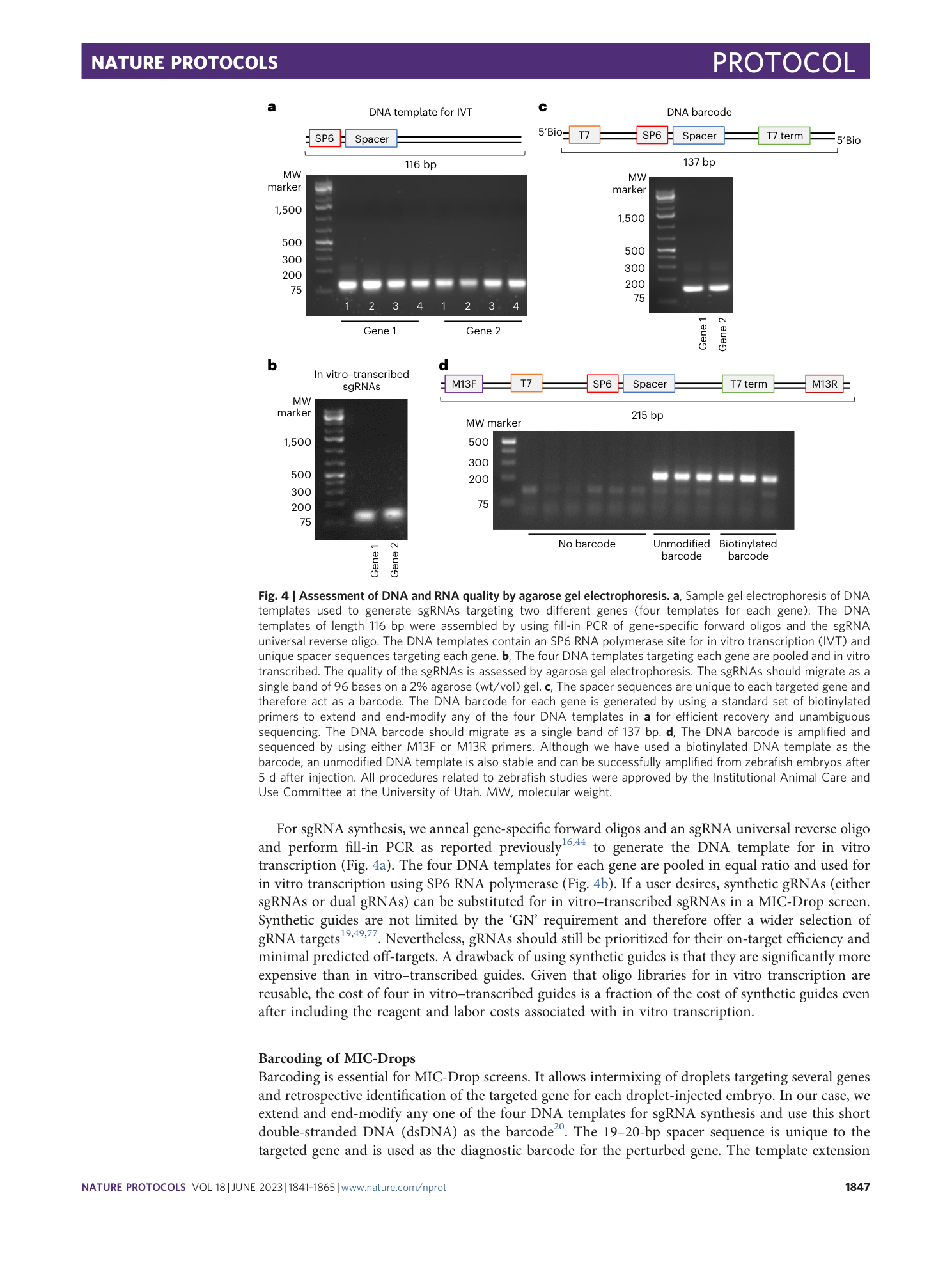
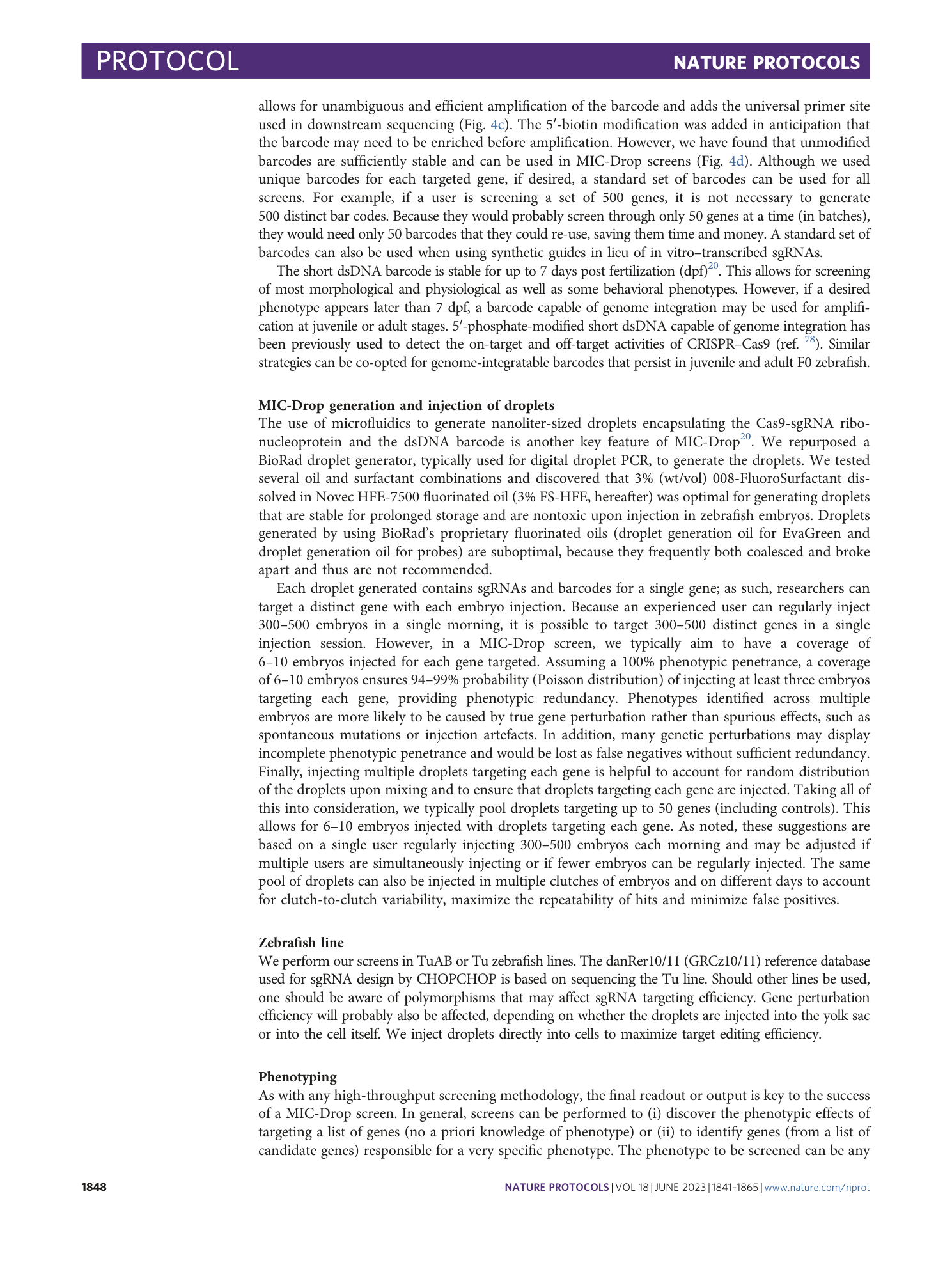
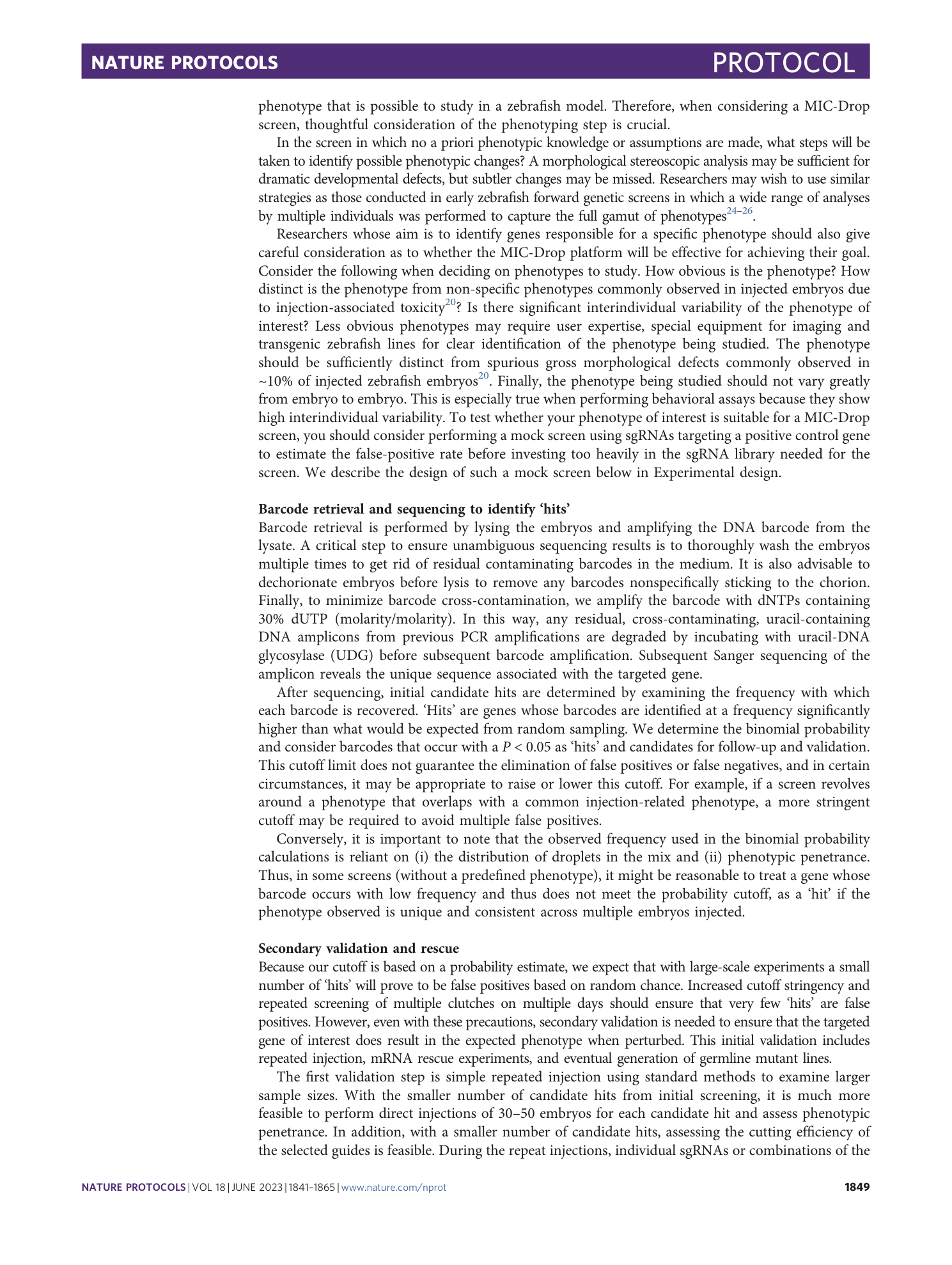
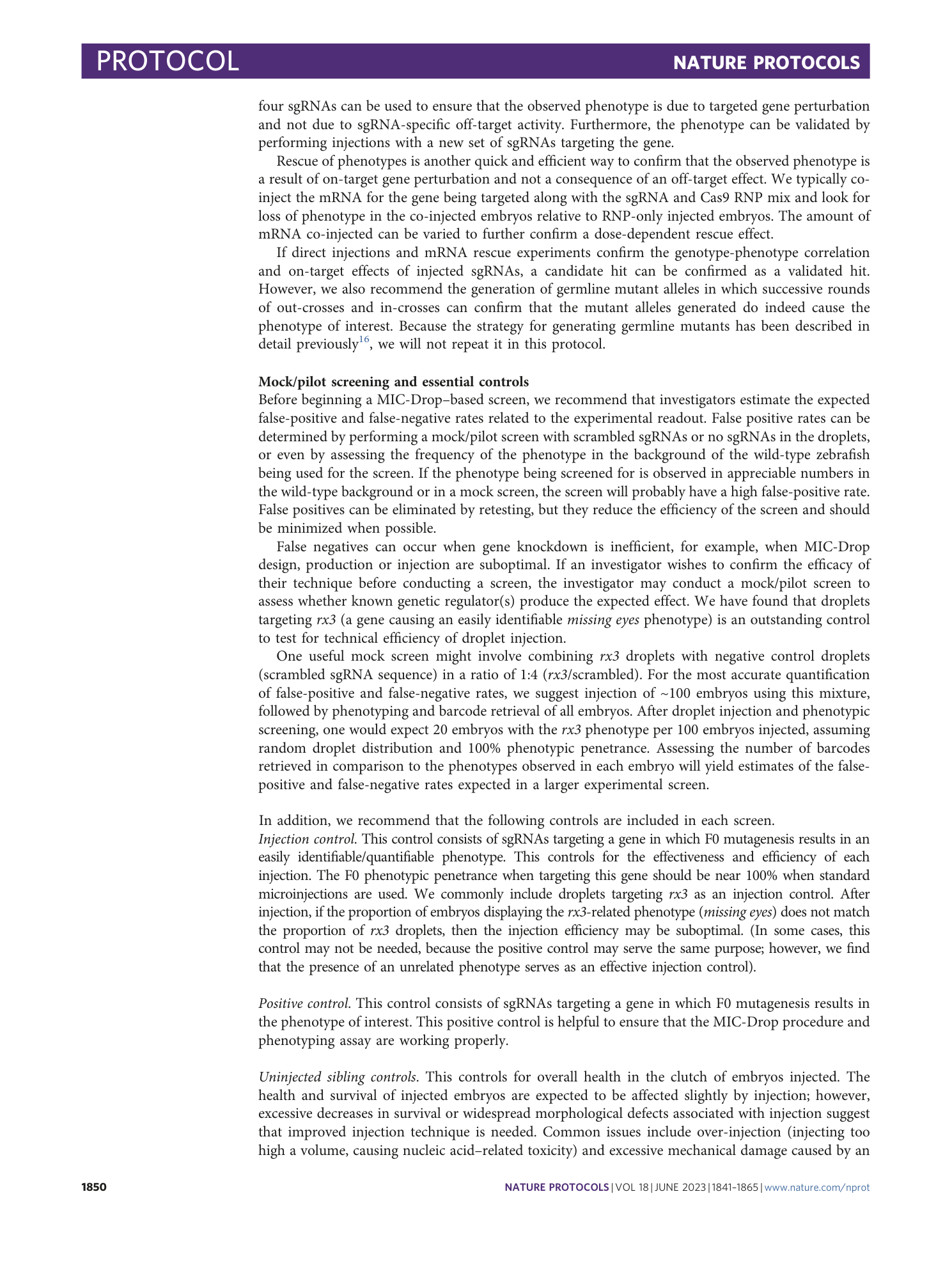
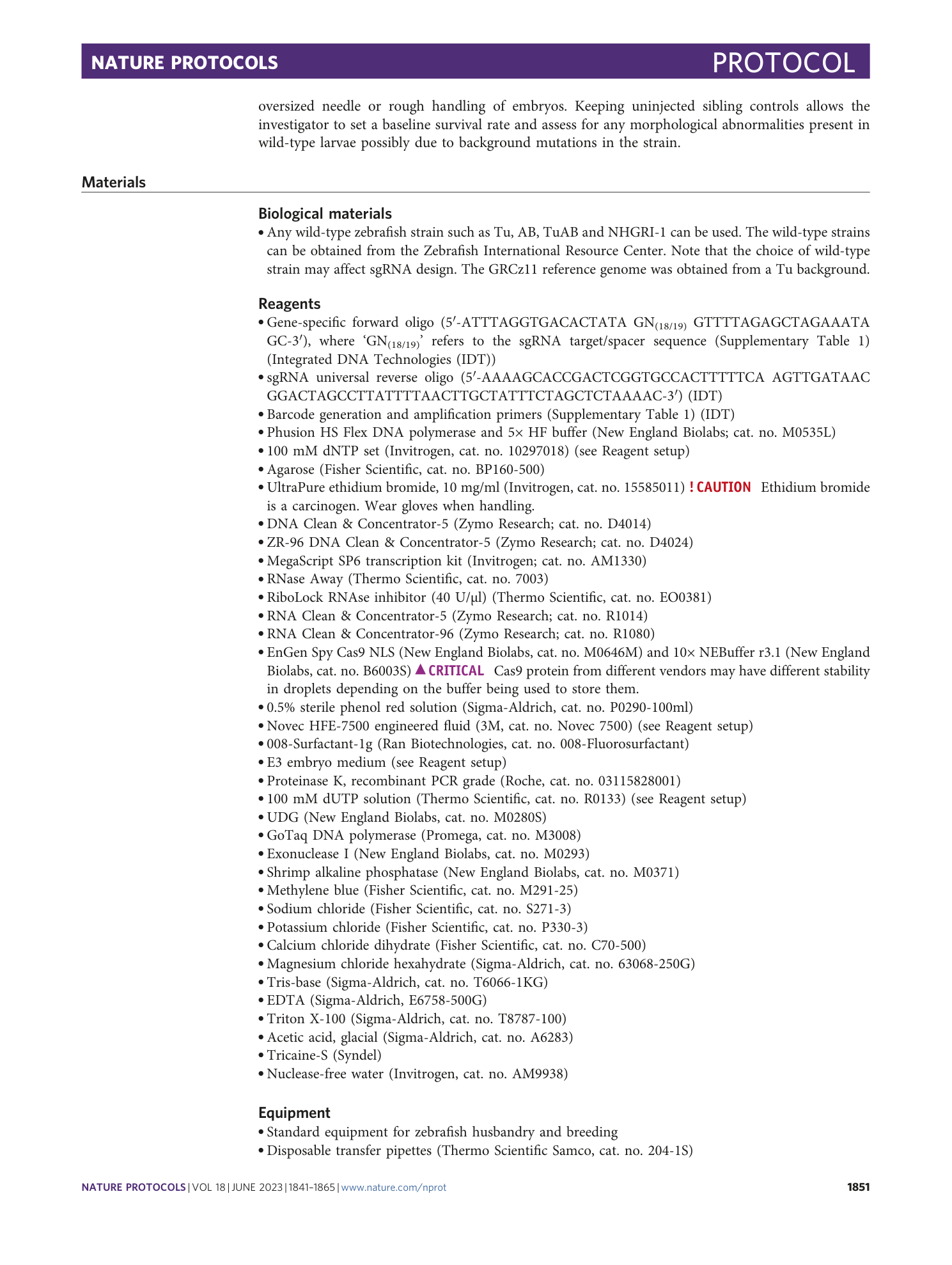
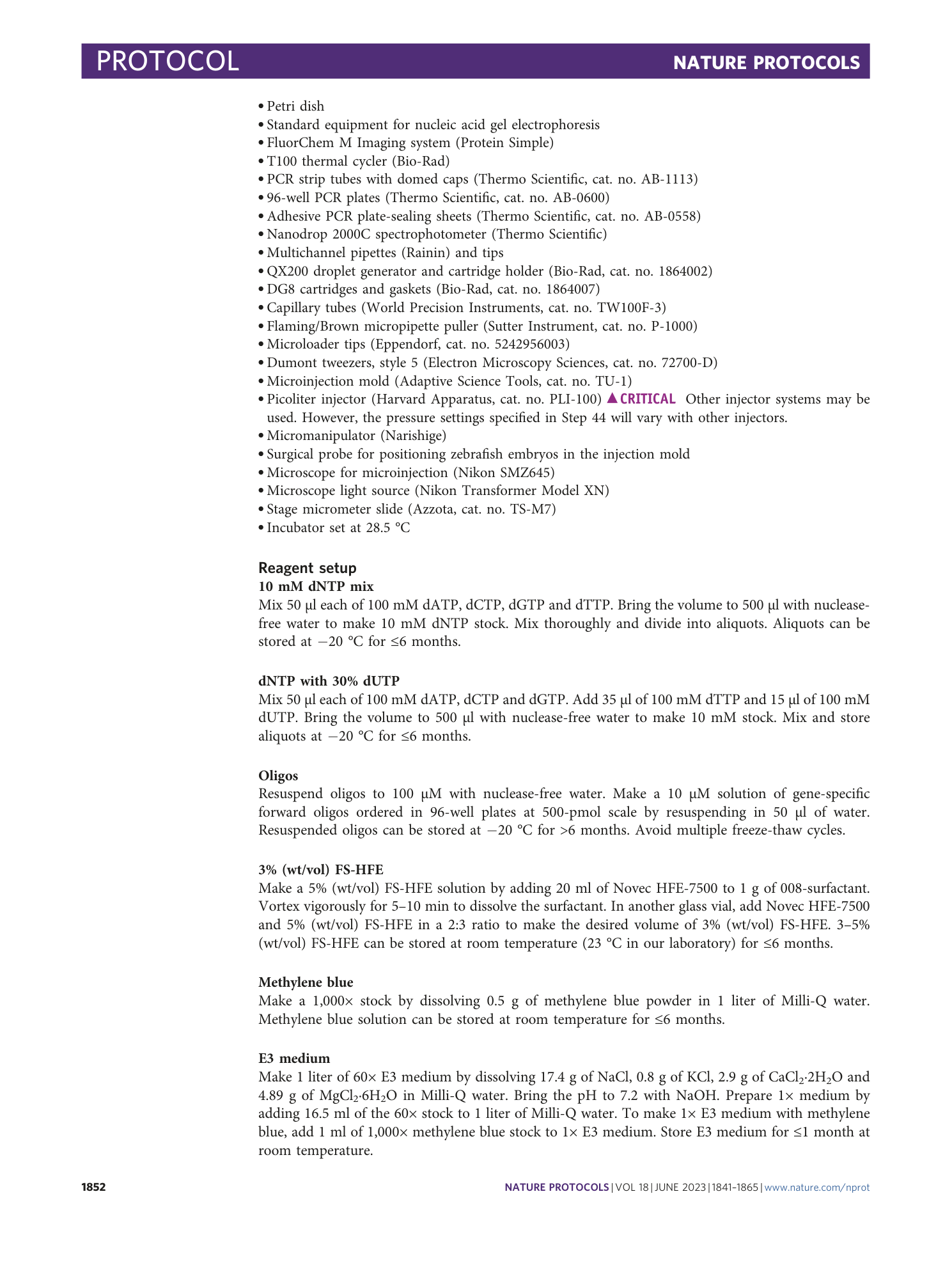
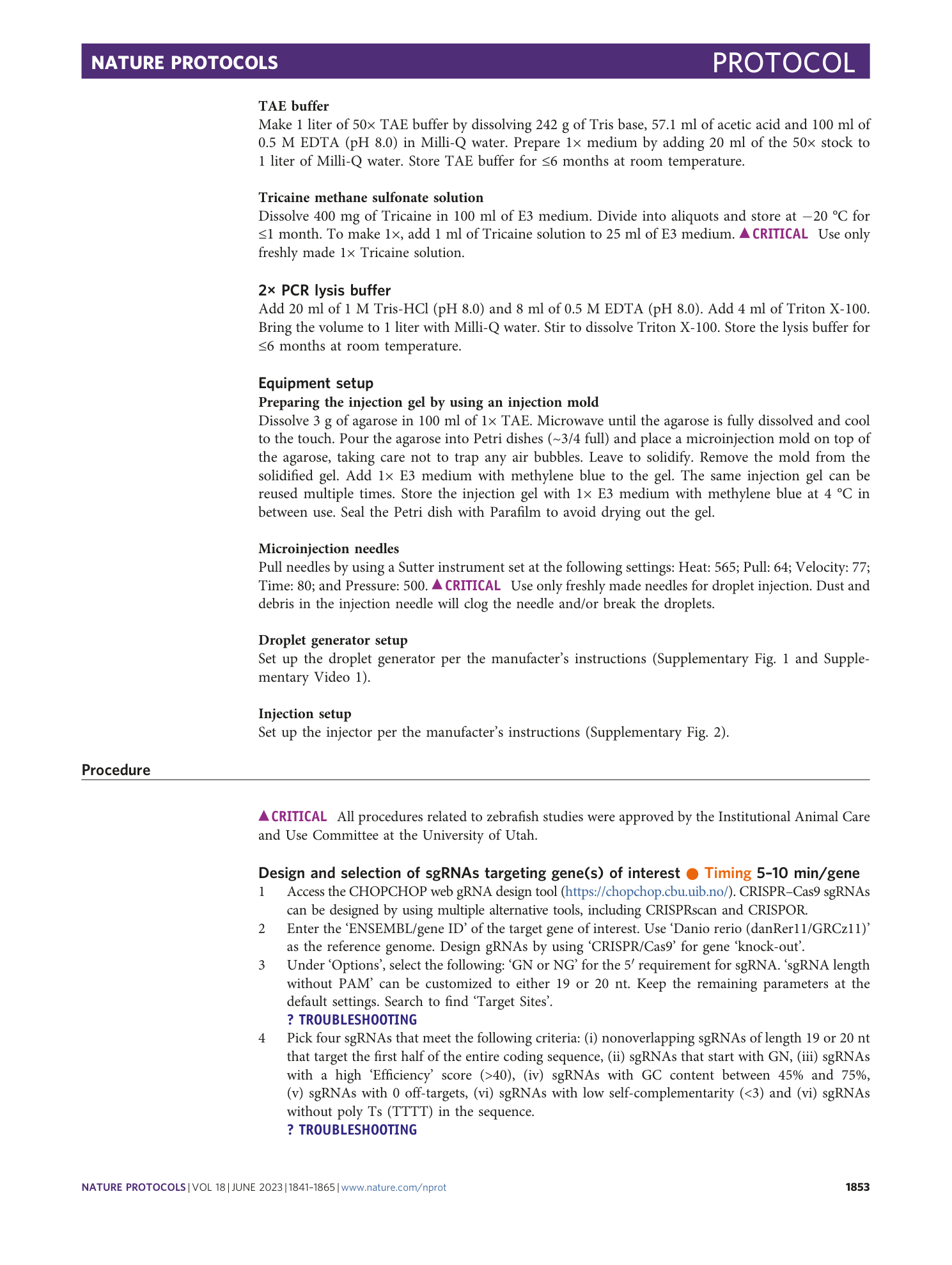
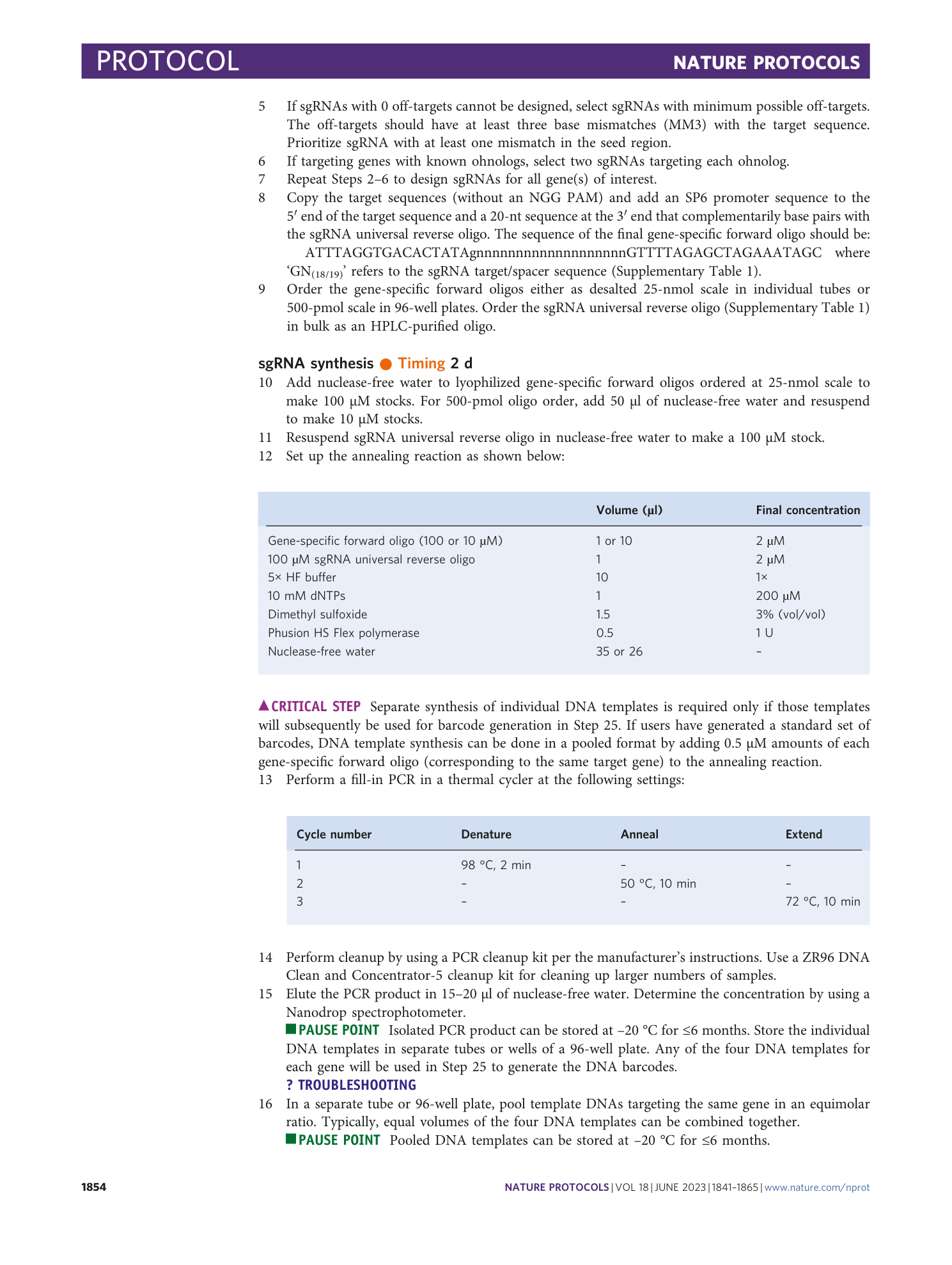
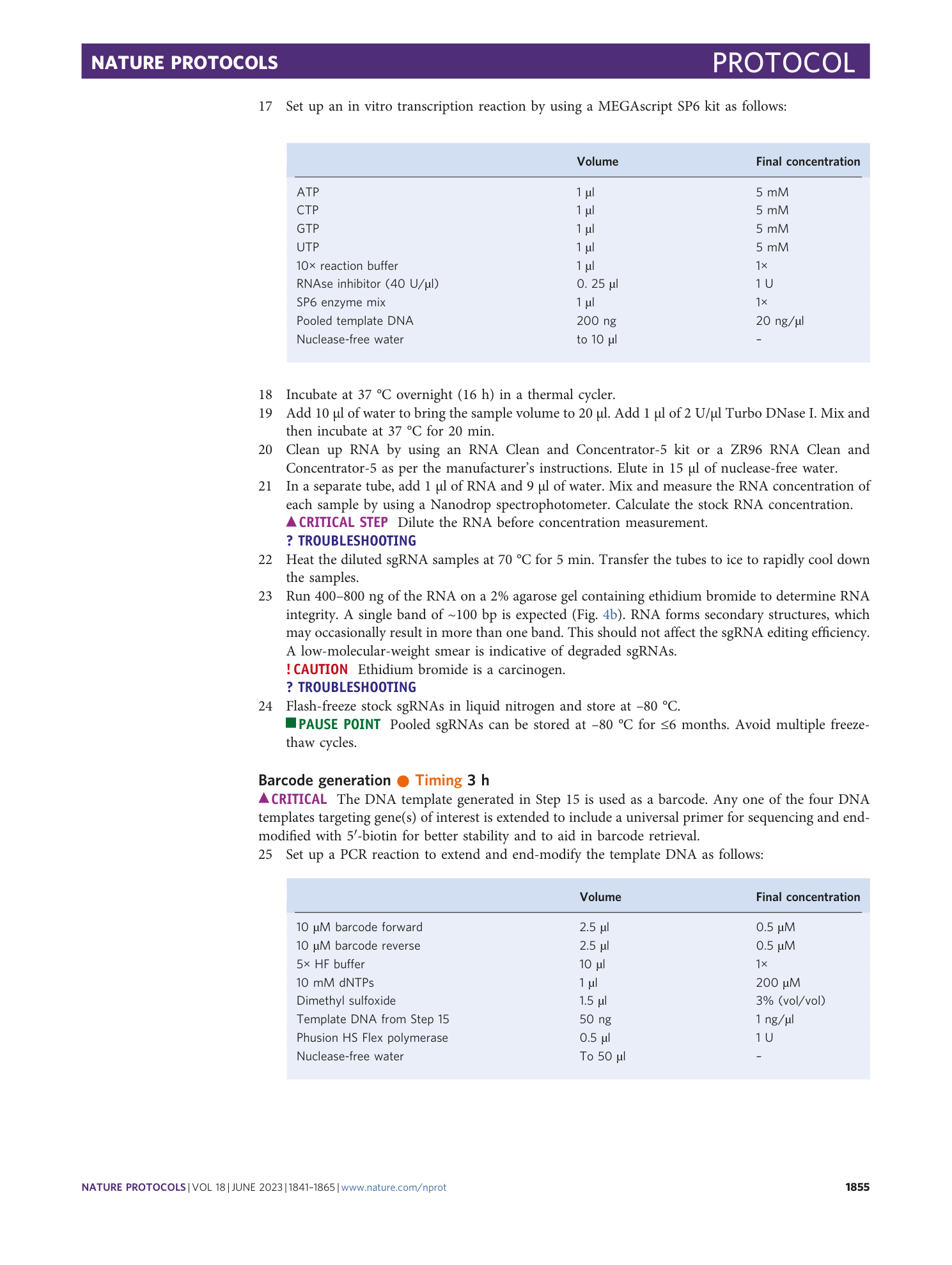
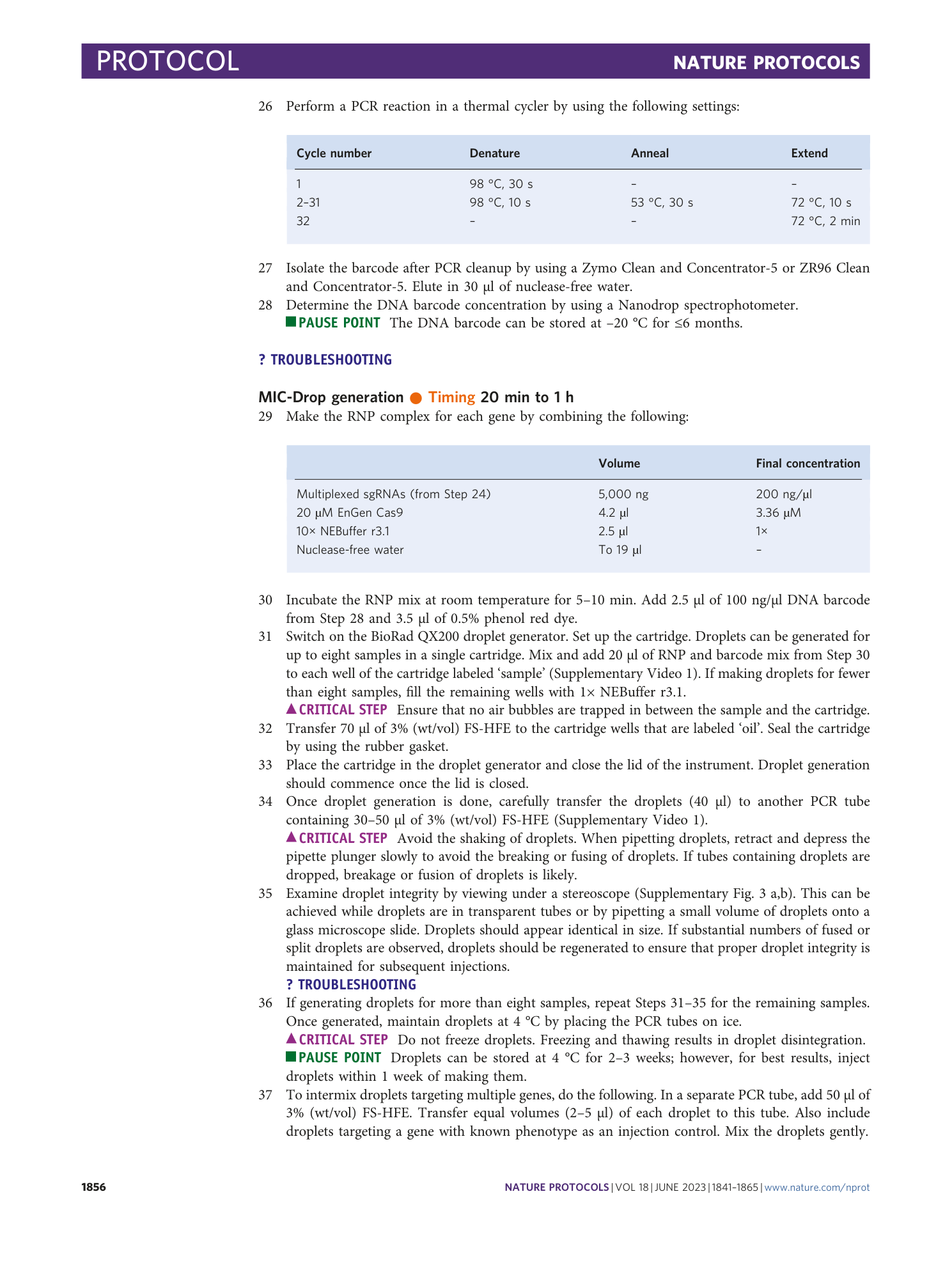
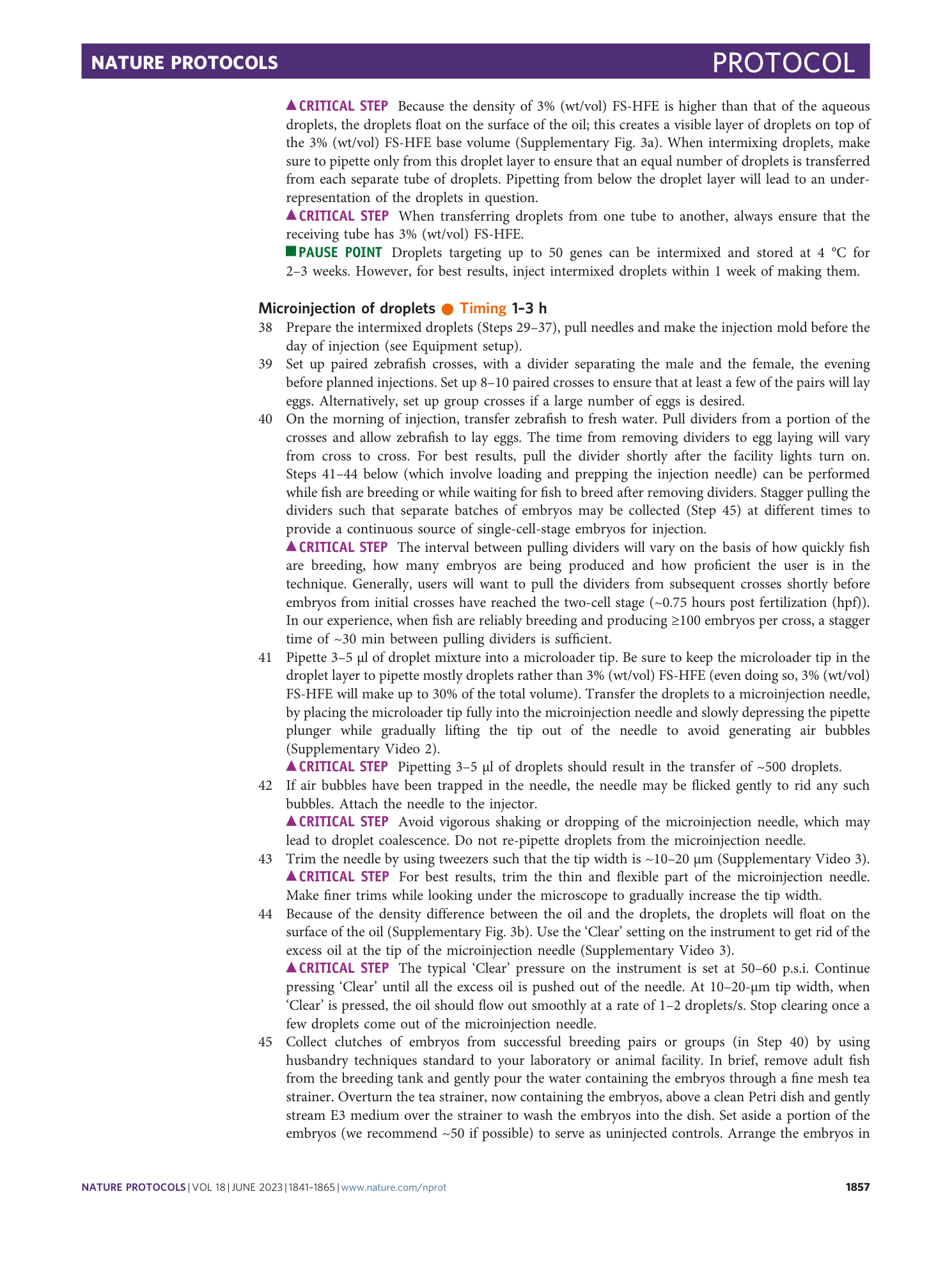
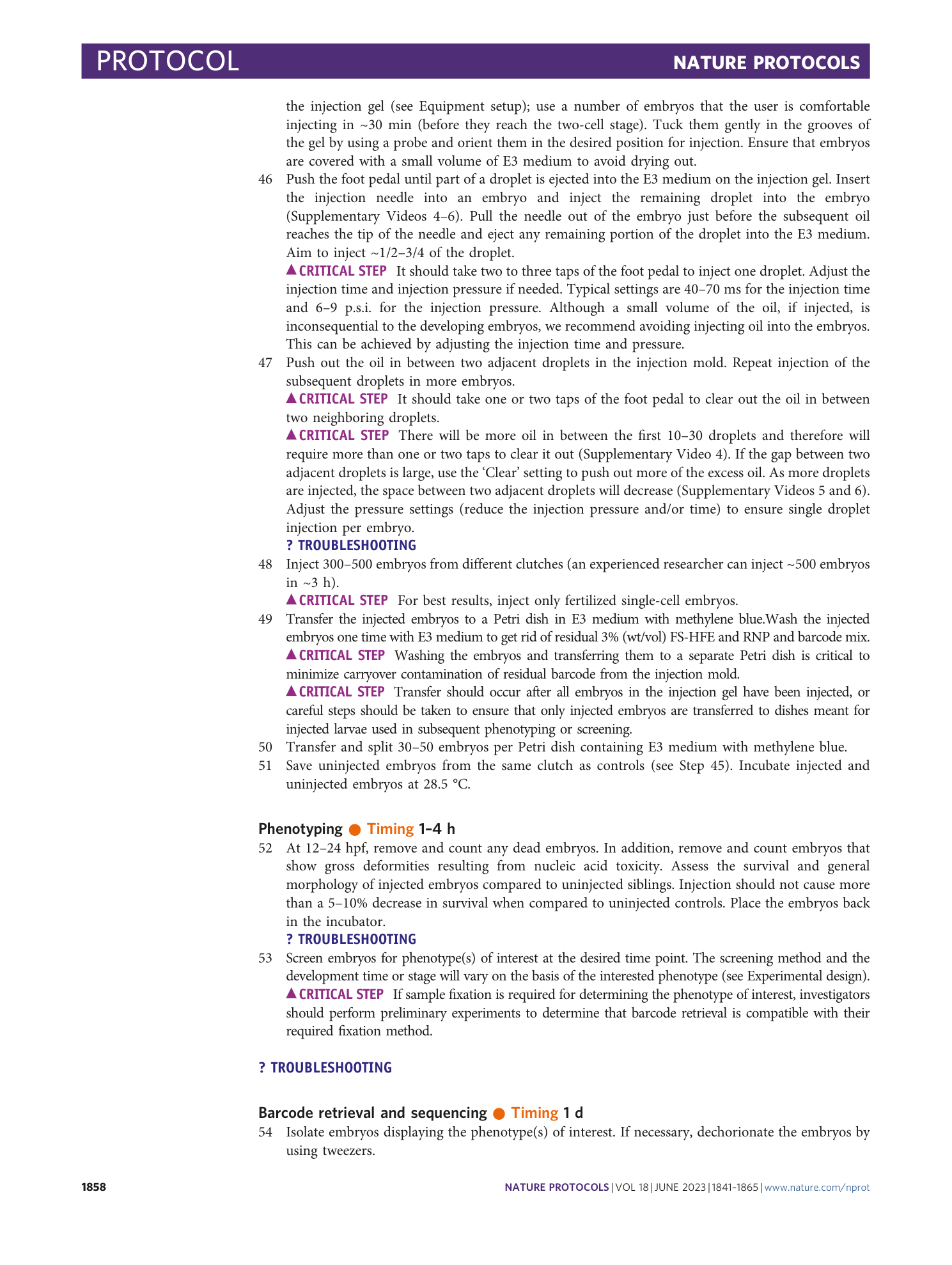
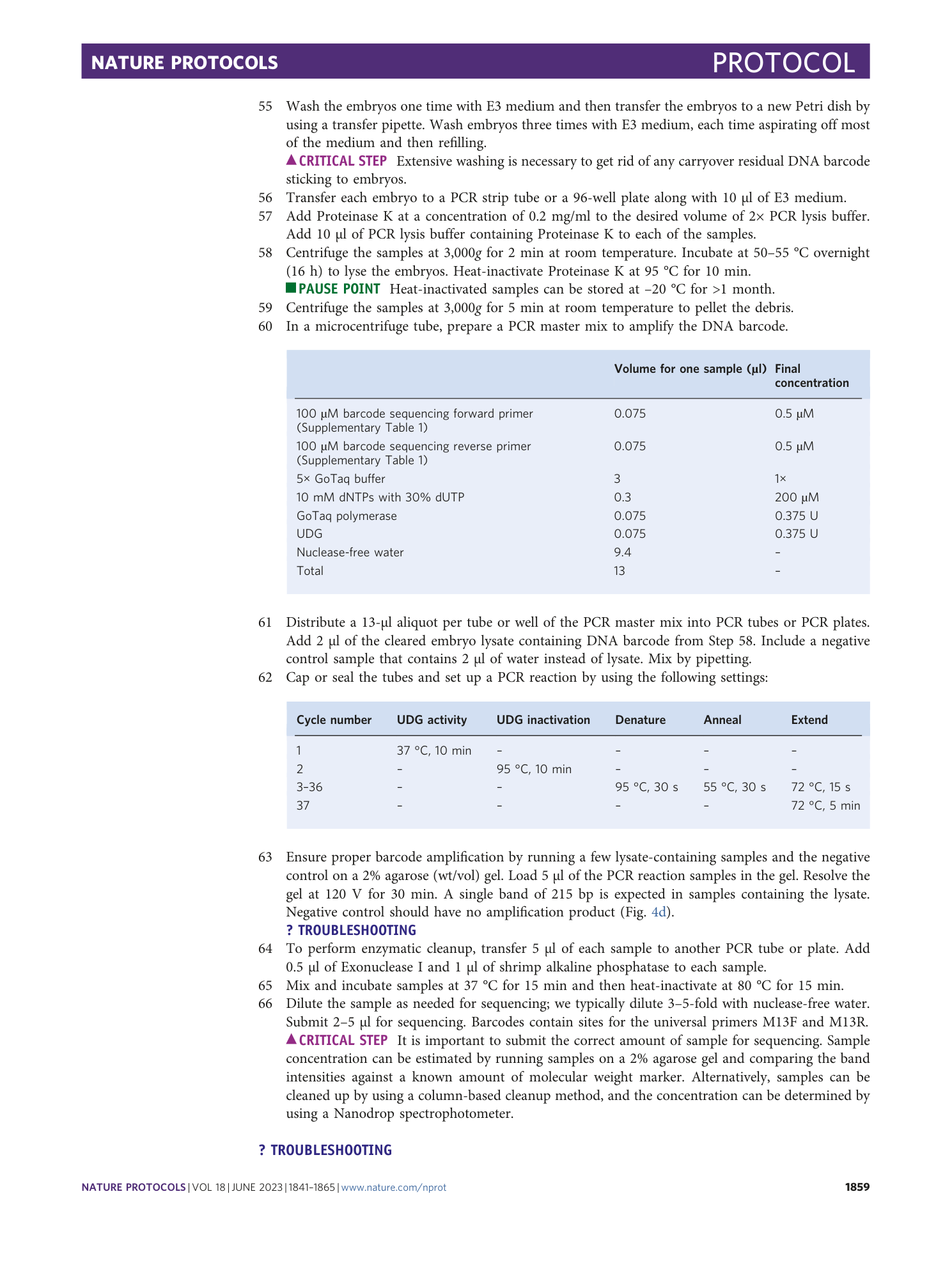
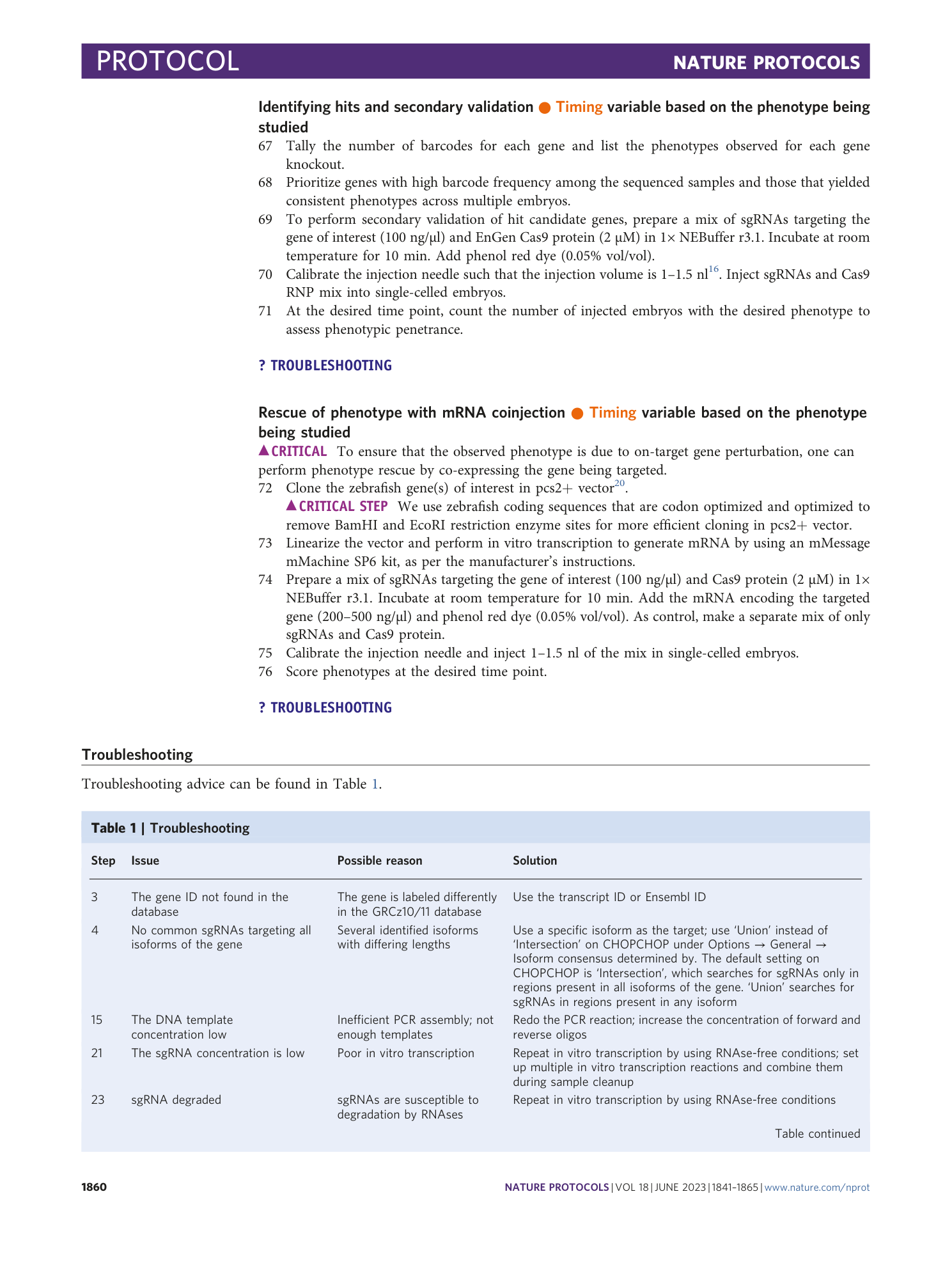
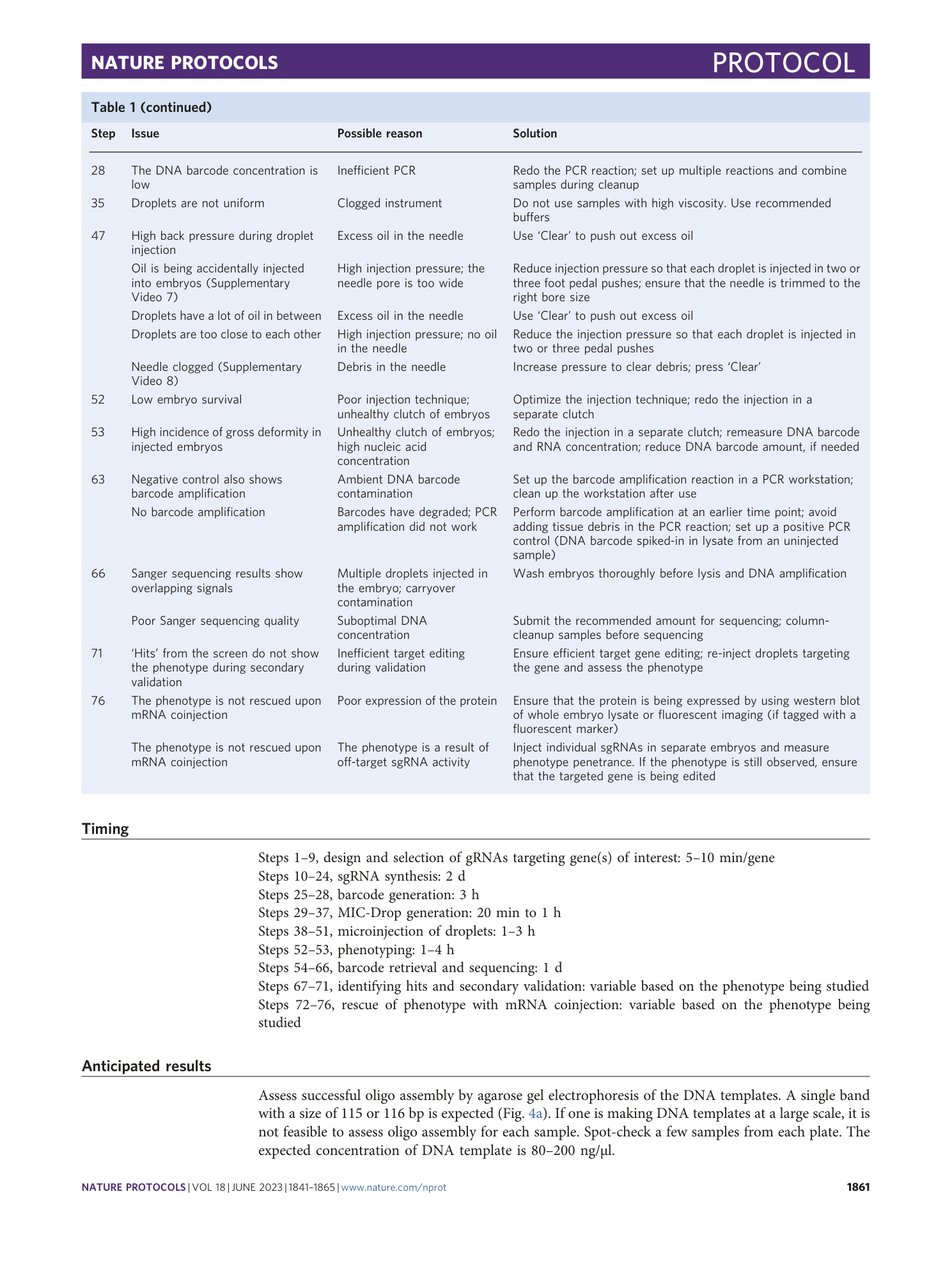
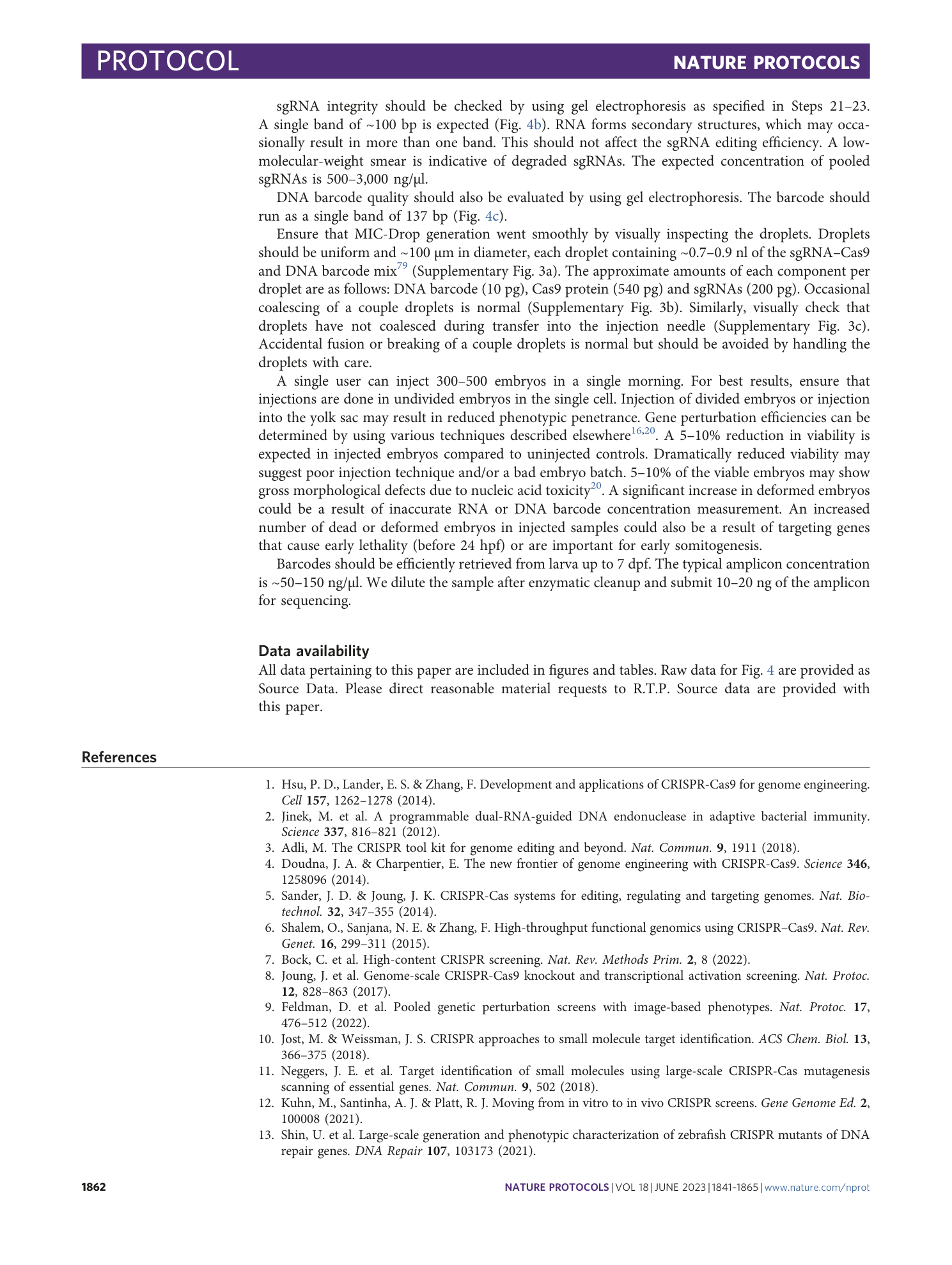
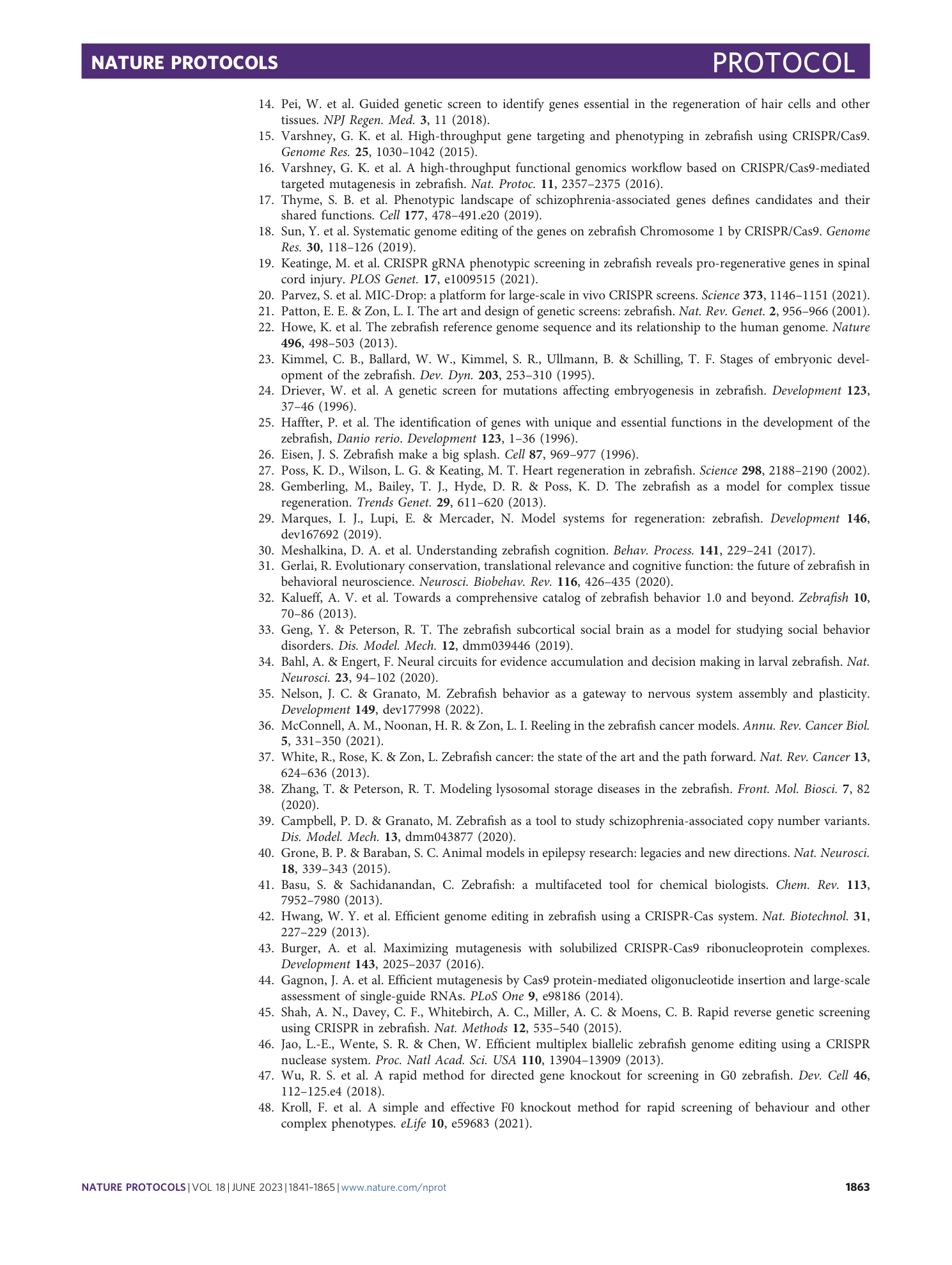
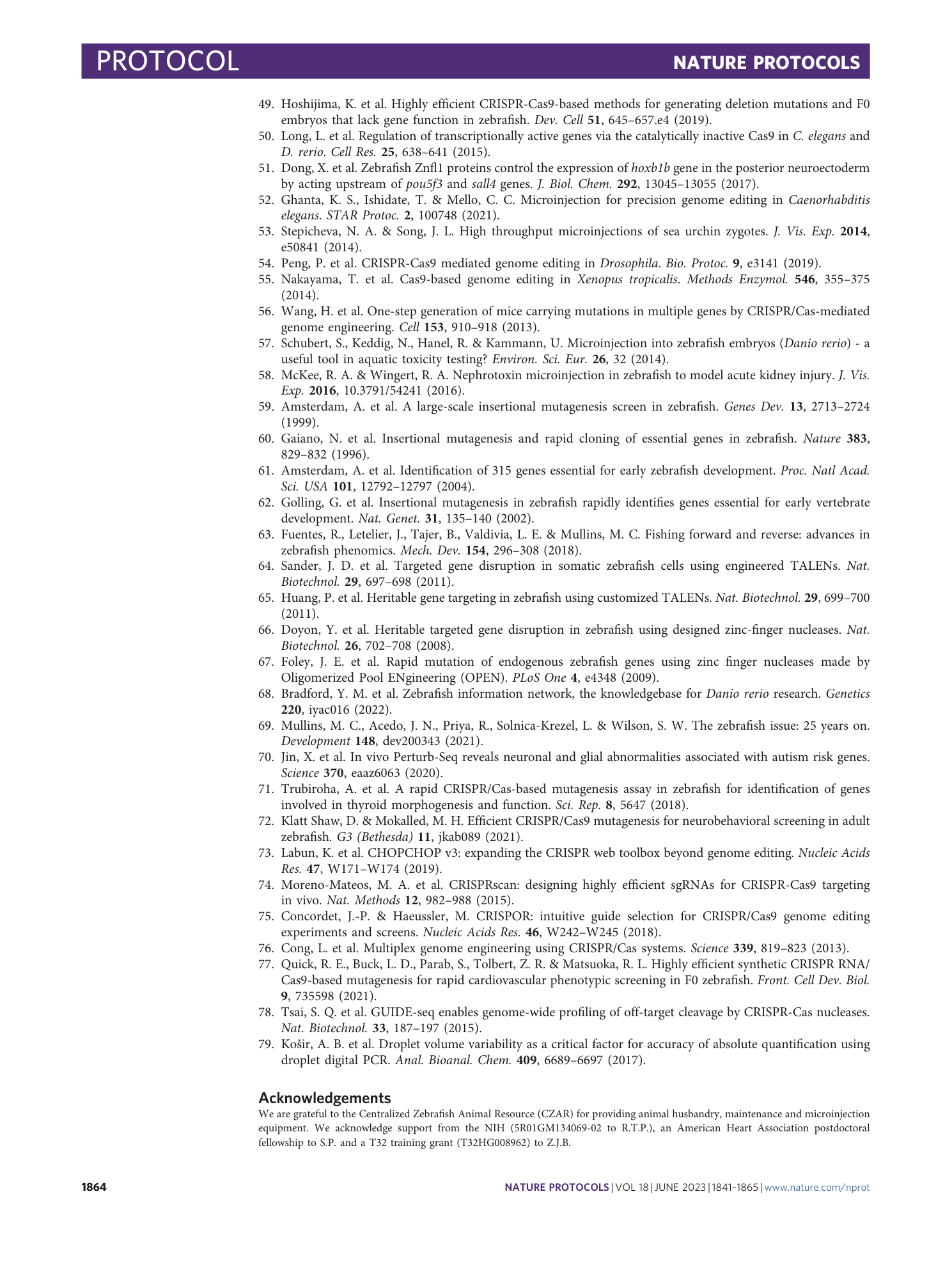
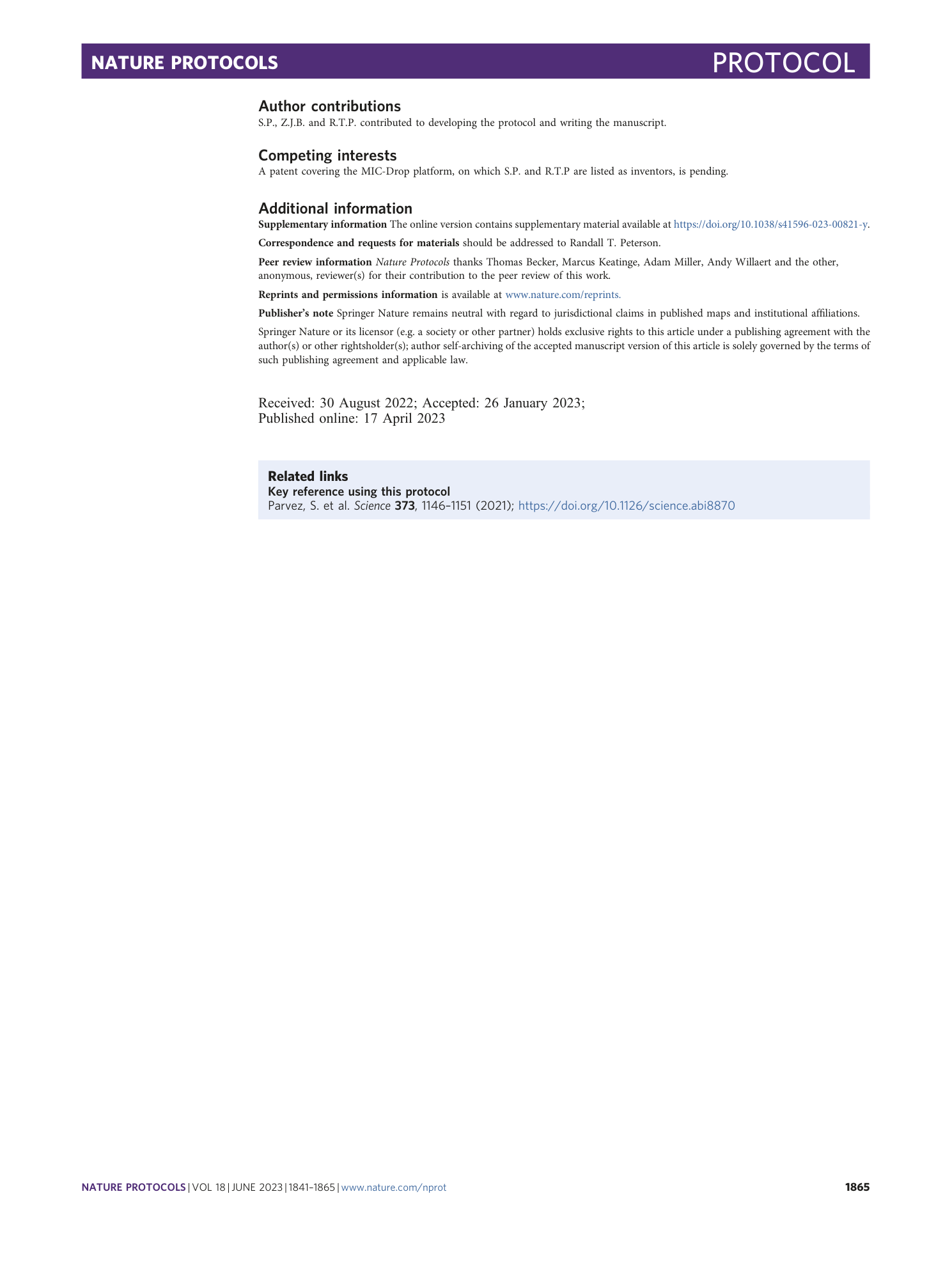
Supplementary information
Supplementary Information
Supplementary Figs. 1–3
Supplementary Table 1
sgRNA target sequences and primers used in the protocol. sgRNA target/spacer sequences of control scrambled sgRNAs, sgRNAs targeting rx3 and tbx16 genes and primers used for barcode generation and barcode amplification.
Droplet generation using a QX200 droplet generator. Droplets targeting up to eight genes are generated during a single run of the droplet generator. A single run takes ~2 min.
Transfer of MIC-Drops into a microloader tip. Colored droplets (used as proxies for droplets targeting different genes) being loaded into a microloader tip.
Trimming of the microinjection needle for droplet injection. After transferring droplets to a microinjection needle, the needle is trimmed to the desired width. Excess oil is cleared out until the first droplet reaches the tip of the injection needle.
Injection of MIC-Drops in zebrafish embryos. The first 10–30 droplets are separated by a larger volume of 3% (wt/vol) FS-HFE and require several pushes of the foot pedal (5–10 pushes) to clear out the excess oil.
Injection of MIC-Drops in zebrafish embryos. After the first 10–30 droplets have been injected, the remaining droplets are closer together and require only two or three pushes of the foot pedal to clear out the excess oil.
Injection of droplets containing phenol red. In the previous videos, food coloring is used in the droplets for better visualization. Food coloring may be toxic to developing embryos and should not be used in experiments.
Video illustrating accidental injection of an oil droplet in an embryo. Although injection of a small volume of oil is non-consequential to embryo development, it is best to avoid injecting oil.
Clearing a clogged needle. Occasionally, the injection needle can get clogged. The needle can be unclogged by pressing the ‘Clear’ button or trimming the needle.

